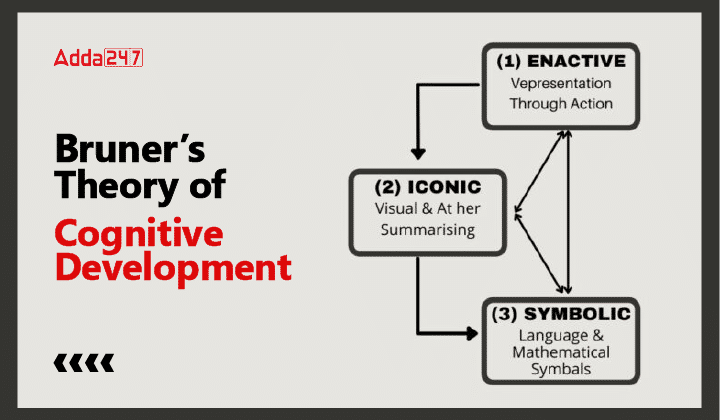Table of Contents
Bruner’s Theory of Cognitive Development, a prominent framework in child pedagogy, emphasizes the significance of active learner engagement and interaction with the learning environment. Proposed by psychologist Jerome Bruner, this theory centers on the concept of scaffolding, where educators provide structured support to children’s learning processes, gradually empowering them to master more complex concepts.
Bruner’s theory underscores the importance of organizing information into meaningful patterns, known as “schemata,” and highlights the role of language in shaping cognitive development. It champions the idea that children move through three stages of cognitive representation: enactive (action-based), iconic (image-based), and symbolic (language-based), with each stage contributing to a child’s understanding and problem-solving abilities.
Bruner’s Theory of Cognitive Development
Jerome Bruner is a process theorist who held that children have a highly action-oriented form of intelligence and they know things by perceiving, them and are consequently strongly influenced by the vivid perceptual characteristics of objects and events.
Pattern of Cognitive Growth
According to Bruner, cognitive growth has several distinct characteristics. They are :
- Cognitive development is characterized by increasing independence of a response from a stimulus.
- Intellectual growth depends on child’s mental representation of the world.
- intellectual development involves an increasing capacity of symbolic activity.
- intellectual development depends upon systematic interaction with members of society.
- Mental development is characterized by increasing mastery of language.
- Intellectual development is marked by increasing ability to perform concurrent activities and to allocate attention sequentially to various situations.
Stages of Cognitive Development
According to Bruner, one’s intellectual ability evolves as a result of maturation, training, and experiences though a series of three sequential stages viz, the enactive, iconic and symbolic.
- Enactive Stage
This stage is characterized by the child’s representation of things and events in terms of appropriate motor responses and activities. At this stage the child knows the world only through the medium of actions, not through the words or images. For example, the infant understands his environment by touching, biting and grasping.
- Iconic Stage
This stage is characterized by the child’s representation of things and events in terms of sensory images or mental pictures (representation through perceptual means): At this stage. information is gained by imagery and the cognitive process controlled by perception. Single feature of the environment holds attention, visual memory is developed but impressionistic leaps take place.
- Symbolic Stage
During this stage, symbolic representation in the form of words, symbols and other imagery abstract phenomena takes the place of motor activities and sensory images. The child engages in symbolic activities such as language and mathematics. The symbolic stage allows compatibility-that is condensation of experiences into formulae such as F=ma, E=MC², and into semantically rich statements, such as Too many cooks spoil the broth or A stitch in time saves nine.
Educational Implications of Bruner’s Theory
The following are the important, educational implications of Bruner theory of cognitive development :
- Bruner joins mental growth modes of representation and learning processes to introduce his idea of the spiral curriculum. He states that if the teachers match the subject curriculum. He states that if the teachers match the subject matter to the child’s mode of representation, they can introduce complex ideas to children at different times and with increasing abstractness.
- Children learn according to their mode of representation. So the teacher should select learning activities to be given to the children keeping their stage of development in mind. For example, children at the iconic stage need concrete objects and activities so that they can absorb them perceptually.
- According to Bruner, the child is first at the level of motor performance and then starts constructing the images and then only he learns the use of words. The main defect of present day education is that it begins with the word. Education which beings with motor activities will be more effective for preschoolers and primary schoolers.


 UGC NET Visual Arts Syllabus 2024 PDF Do...
UGC NET Visual Arts Syllabus 2024 PDF Do...
 Chandigarh JBT Answer Key 2024 And Quest...
Chandigarh JBT Answer Key 2024 And Quest...
 UGC NET Hindu Studies Syllabus 2024 PDF ...
UGC NET Hindu Studies Syllabus 2024 PDF ...








